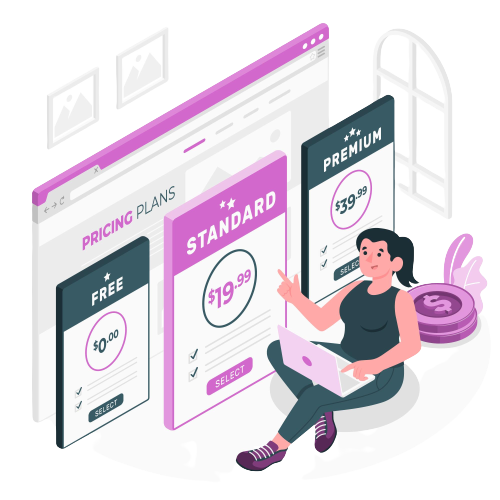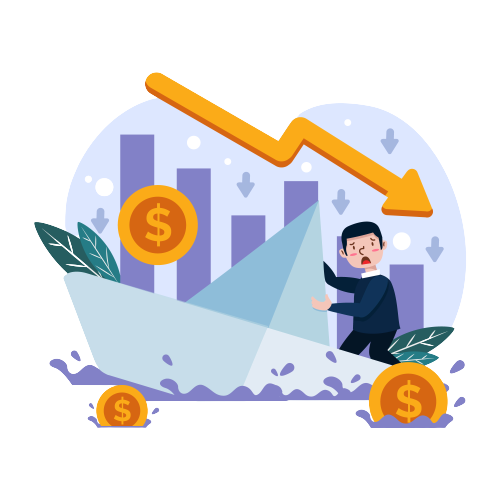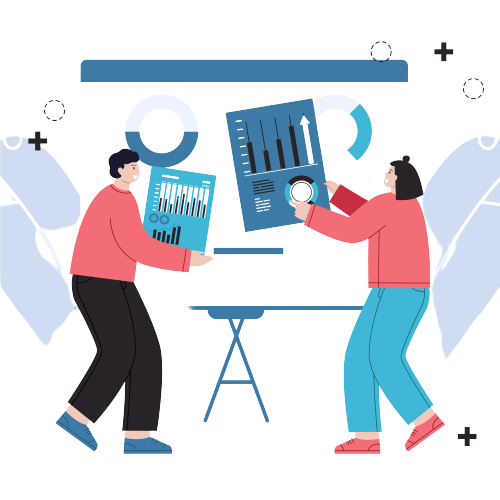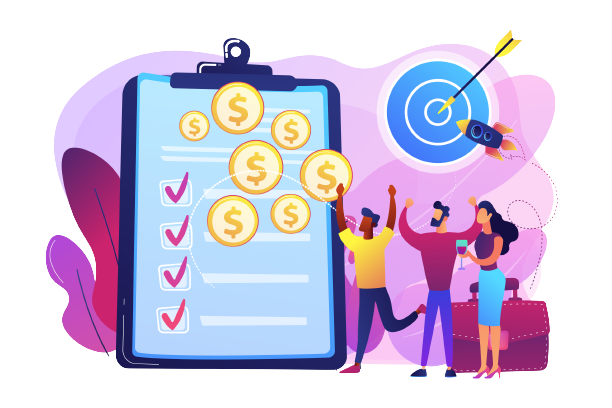
Have you ever imagined a world where businesses not only set prices but also dance to the rhythm of real-time data, where profits are optimized, and customer satisfaction is finely balanced? If not, then we welcome you to the realm of Power Pricing CRM—a technological marvel that’s reshaping industries by crunching numbers and boosting profits like never before.
Think about the last time you made a purchase online or strolled down the aisles of your favorite store. Did you ever wonder why that product had a certain price tag? Or how do airlines manage to offer a range of fares for the same flight? Well, hidden in those numbers is a complex mix of how money works, how people think, and how plans are made. But things have changed, and now a clever tool called Power Pricing CRM is taking the lead.
Now, you might be thinking, “What on earth is Power Pricing CRM?” Don’t worry; we’re here to break it down in simple terms. Imagine a super-smart assistant that doesn’t just tell you what others are doing but also predicts what they might do next. It’s like having a crystal ball for pricing decisions, allowing businesses to make well-informed moves that maximize profits and keep customers happy.
In this blog, we’ll unravel the mysteries behind pricing CRM software, exploring how it works its magic to revolutionize industries. From the basics of how it functions to jaw-dropping real-world success stories, we’ll cover it all. Plus, we’ll dig into the nitty-gritty of challenges and opportunities, and even take a sneak peek into what the future holds.
So, whether you’re a seasoned entrepreneur, a curious consumer, or someone who simply loves the art of turning numbers into profits, get ready. We’re about to explore the dynamic world of Power Pricing CRM, where data meets dollars and industries are reshaped in ways you never thought possible. Ready? Let’s get started!
What Is Power Pricing CRM and How Is It Important?

Staying competitive in the business landscape requires more than just offering quality products and services. Pricing strategies play a crucial role in determining a company’s success, and this is where Power Pricing CRM comes into play. Power Pricing CRM is a cutting-edge software solution that combines the power of CRM systems with advanced pricing analytics. This fusion creates a dynamic platform that empowers businesses to set optimal prices, adapt to market changes, and drive profitability like never before.
At its core, Power Pricing CRM harnesses the wealth of customer data stored in CRM systems and applies sophisticated pricing algorithms to extract actionable insights. It seamlessly integrates customer behavior, purchasing patterns, market trends, and competitor analysis to formulate pricing strategies that maximize revenue and profit margins. By leveraging this comprehensive data-driven approach, businesses can move beyond one-size-fits-all pricing and offer personalized experiences to customers, ultimately driving customer satisfaction and loyalty.
Why Traditional Pricing Strategies Fall Short in Today’s Dynamic Markets?

Traditional pricing strategies, while effective in static market conditions, struggle to keep up with the fast-paced dynamics of modern business environments. Fixed pricing models often lead to missed opportunities, leaving money on the table during demand spikes or failing to capture value during slower periods. Additionally, traditional pricing methods lack the agility needed to adjust prices rapidly in response to competitive moves or sudden changes in market conditions. This inflexibility can result in lost market share, eroded profits, and reduced competitiveness.
The Promise of Data-Driven Pricing and its Impact on Profitability

Power Pricing CRM offers a promising solution by introducing data-driven pricing approaches. By analyzing a wealth of data points, including customer preferences, historical sales, external market factors, and even real-time demand, businesses can make informed pricing decisions. This data-driven approach enables companies to set prices that are aligned with customer willingness to pay, product demand, and overall market trends. As a result, businesses can optimize their pricing strategies to maximize revenue and profit margins while maintaining a competitive edge.
Moreover, data-driven pricing doesn’t just impact immediate profits; it also fosters customer loyalty and brand reputation. When customers perceive that they are receiving fair and personalized prices, they are more likely to develop trust in the brand and become repeat buyers. This long-term customer relationship translates to sustained revenue streams and higher customer lifetime value.
How Does Power Pricing CRM Work?
Pricing decisions can make or break a company’s profitability and market share. Power Pricing CRM is a revolutionary way the business can set their prices. Let’s find out how it actually works.
1. Data Aggregation and Integration: Gathering Insights from Various Sources
At the heart of Power Pricing CRM lies its ability to gather and integrate data from a multitude of sources. These sources can include historical sales data, customer behavior, market trends, competitor pricing, economic indicators, and more. By aggregating these diverse datasets, the software creates a comprehensive and multi-dimensional view of the market landscape.
2. Advanced Data Analysis: Extracting Meaningful Insights
Once the data is collected, Power Pricing CRM employs advanced analytical techniques to extract meaningful insights. Traditional pricing approaches often rely on manual analysis, which can be time-consuming and error-prone. However, with the power of data analytics, the software can quickly identify patterns, trends, and correlations that might otherwise go unnoticed.
3. Real-time Insights for Informed Decisions
One of the defining features of Power Pricing CRM is its ability to provide real-time insights. In rapidly changing markets, having access to up-to-the-minute data is invaluable. This real-time information empowers businesses to make informed pricing decisions based on the most current market conditions. Whether it’s adjusting prices to match shifts in demand, responding to competitor actions, or optimizing inventory levels, real-time insights ensure that businesses are always one step ahead.
4. Dynamic Pricing Strategies: Adapting to Market Dynamics
Dynamic pricing is a cornerstone of Power Pricing CRM’s approach. Unlike static pricing models, which set a fixed price for a product or service, dynamic pricing takes into account various factors to adjust prices in real time. These factors can include demand fluctuations, inventory levels, competitor pricing, time of day, seasonality, and even individual customer behavior.
5. The Role of AI Algorithms: Navigating Complexity with Precision
The true power of Power Pricing CRM comes from its AI-driven algorithms. These algorithms are designed to process and analyze vast amounts of data at speeds that human analysts simply cannot match. By recognizing complex patterns and relationships within the data, AI algorithms can provide pricing recommendations that are not only accurate but also tailored to the specific goals of the business.
6. Predictive Analytics: Forecasting Future Trends
One of the most remarkable aspects of Power Pricing CRM is its predictive analytics capabilities. AI algorithms can forecast future market trends and customer behaviors based on historical data. This enables businesses to proactively adjust their pricing strategies to capitalize on upcoming opportunities or mitigate potential risks.
By accepting the precision and agility offered by Power Pricing CRM, industries can reshape their approach to pricing and unlock new levels of profitability in today’s dynamic markets.
How Have Industries Been Transformed: Case Studies in Profitability
 Power Pricing CRM has proved remarkable as it has redefined pricing strategies across various industries, resulting in remarkable transformations and impressive profitability gains. Here are several instances of companies and their narratives illustrating how Power Pricing CRM propelled them toward enhanced business profitability.
Power Pricing CRM has proved remarkable as it has redefined pricing strategies across various industries, resulting in remarkable transformations and impressive profitability gains. Here are several instances of companies and their narratives illustrating how Power Pricing CRM propelled them toward enhanced business profitability.
- Retail Renaissance: A prime example of Power Pricing CRM’s impact is seen in the retail sector. Traditionally, retailers often struggled with the complexity of pricing their products effectively, often resorting to manual adjustments. However, with the integration of Power Pricing CRM, retailers gained the ability to analyze market trends, monitor competitors, and even consider factors like weather, holidays, and events to adjust prices dynamically. This approach led to increased footfall, higher conversion rates, and boosted sales. One notable success story is Amazon’s dynamic pricing strategy, which relies heavily on real-time data analysis to optimize prices and enhance customer engagement. [Reference: Amazon’s Dynamic Pricing Strategy]
- E-commerce Evolution: E-commerce platforms have embraced Power Pricing CRM to offer personalized shopping experiences. By analyzing customer behavior, purchase history, and browsing patterns, these platforms can present tailored prices to different users. This technique, often referred to as personalized pricing, not only boosts sales but also improves customer loyalty. Online retailers like Alibaba have successfully used Power Pricing CRM to create a dynamic pricing ecosystem that caters to individual preferences while maximizing profitability. [Reference: Alibaba’s Dynamic Pricing]
- Manufacturing Metamorphosis: Even the manufacturing sector has experienced a revolutionary shift with Power Pricing CRM. Manufacturers have transitioned from traditional fixed pricing to demand-driven pricing models. By analyzing data from suppliers, production costs, and market demand, manufacturers can optimize their product pricing in real time. This shift has led to reduced waste, improved inventory turnover, and increased profit margins. One noteworthy example is General Electric’s use of Power Pricing CRM to optimize the pricing of industrial equipment and services, contributing to increased revenue and customer satisfaction. [Reference: GE’s Dynamic Pricing in Industrial Equipment]
- Beyond Boundaries: The impact of Power Pricing CRM extends beyond traditional sectors. Even service-based industries such as hospitality and travel have witnessed transformative changes. Hotels, airlines, and rental services have leveraged Power Pricing CRM to adjust prices dynamically based on factors like occupancy rates, demand fluctuations, and seasonality. This has resulted in increased bookings, optimized capacity utilization, and higher revenue. Uber, for instance, utilizes real-time data analysis to implement surge pricing during peak demand periods, effectively balancing supply and demand. [Reference: Uber’s Surge Pricing Strategy]
From Reactive to Proactive: Adapting to Market Changes
 Every business must know that staying ahead of market changes is crucial for sustained success. This is where Power Pricing CRM emerges as a transformative tool, enabling businesses to shift from reactive approaches to proactive strategies that capitalize on market fluctuations. Let’s find out how’s it possible.
Every business must know that staying ahead of market changes is crucial for sustained success. This is where Power Pricing CRM emerges as a transformative tool, enabling businesses to shift from reactive approaches to proactive strategies that capitalize on market fluctuations. Let’s find out how’s it possible.
1. The Agility of Power Pricing CRM in Responding to Market Fluctuations
Traditionally, businesses have been accustomed to reactive pricing strategies, where changes in pricing are often triggered by external forces such as competitive pressures or sudden shifts in demand. However, this approach often leads to missed opportunities and decreased profitability. Power Pricing CRM disrupts this reactive mindset by offering agility in responding to market fluctuations. With real-time data analysis capabilities, Power Pricing CRM allows businesses to monitor market trends, competitor behaviors, and customer preferences as they happen. This agility enables companies to make rapid pricing adjustments that align with the current market conditions, ensuring that they remain competitive and capture opportunities before competitors can react.2. Leveraging Predictive Analytics to Forecast Demand and Adjust Pricing
One of the standout features of Power Pricing CRM is its integration of predictive analytics into the pricing equation. By analyzing historical data, customer behaviors, and market trends, the system can forecast future demand patterns with a high degree of accuracy. This empowers businesses to anticipate changes in consumer preferences, identify upcoming trends, and forecast fluctuations in demand. Predictive analytics also extends to pricing adjustments. Instead of waiting for sales data to dictate pricing changes, Power Pricing CRM uses predictive models to recommend optimal pricing strategies. For instance, during periods of increased demand, the system might suggest a slight price increase to capitalize on higher consumer willingness to pay. Conversely, during slower periods, it might propose targeted discounts to stimulate demand.3. Redefining Pricing Strategies from Reactive to Proactive Approaches
The shift from reactive to proactive pricing strategies is transformative. Rather than being caught off guard by market shifts, businesses using Power Pricing CRM can take the initiative to shape market dynamics. This involves crafting strategies based on a combination of real-time data, historical insights, and predictive analytics. Proactive pricing strategies allow businesses to offer the right product at the right price, precisely when the market demands it. This can lead to increased market share, improved customer loyalty, and enhanced profitability. Furthermore, such strategies foster innovation, as companies can experiment with pricing variations and analyze the outcomes in real time, optimizing their offerings continuously. Thus, the transition from reactive to proactive pricing is pivotal for modern businesses seeking sustainable growth and profitability. As industries become more competitive and dynamic, harnessing the capabilities of Power Pricing CRM becomes imperative for those aiming to lead the charge in reshaping market landscapes.Customer-Centric Pricing Strategies with Personalization at Scale
 Customer preferences are diverse and constantly evolving. Meeting these preferences and providing personalized experiences can greatly influence customer satisfaction, loyalty, and ultimately, your bottom line. Let’s find out how customer-centric pricing strategies, enabled by CRM insights, comes into play.
Customer preferences are diverse and constantly evolving. Meeting these preferences and providing personalized experiences can greatly influence customer satisfaction, loyalty, and ultimately, your bottom line. Let’s find out how customer-centric pricing strategies, enabled by CRM insights, comes into play.